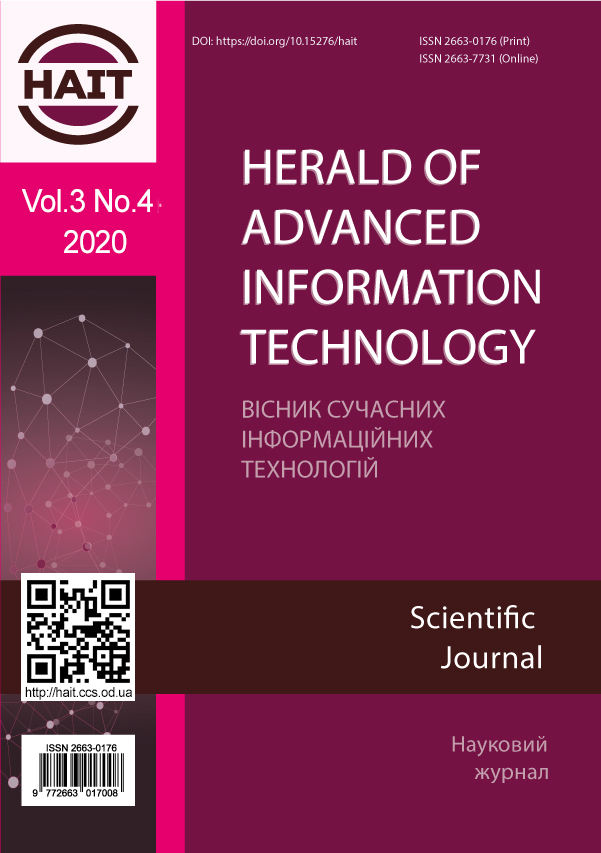Thermal control of thermoelectric cooling devices of transmission and receiving elements of on-board information systems
DOI:
https://doi.org/10.15276/hait.04.2020.5Keywords:
reliability indicators, thermoelectric cooler, dynamic characteristics, heat dissipation capacityAbstract
The work is a continuation of studies of the dynamic characteristics of thermoelectric coolers aimed at analyzing the influence of temperature differences, current operating modes, design parameters of the device and physical parameters of the material of thermoelements for a time constant. The article analyzes the effect of the heat sink capacity of the radiator on the dynamic characteristics, energy and reliability indicators of a single-stage thermoelectric cooler. A dynamic model of a thermoelectric cooler has been developed taking into account the weight and size parameters of the radiator, which relate the main energy indicators of the cooler with the heat removal capacity of the radiator, operating currents, the value of the heat load and the relative temperature difference. The analysis of the dynamic model shows that with an increase in the heat-removing capacity of the radiator at a given thermal load and various current modes, the main parameters of the cooler change. The required number of thermoelements, power consumption, time to reach a stationary mode, and relative failure rate are reduced. With an increase in the relative operating current, the time to reach the stationary mode of operation decreases for different values of the heat sink capacity of the radiator. It is shown that the minimum time to reach the stationary operating mode is provided in the maximum refrigerating capacity mode. The studies were carried out at different values of the heat sink capacity of the radiator in the operating range of temperature drops and the geometry of thermoelements. The possibility of minimizing the heat-dissipating surface of the radiator at various current operating modes and the relationship with the main parameters, reliability indicators and the time to reach the stationary operating mode are shown. Comparative analysis of weight and size characteristics, main parameters, reliability indicators and dynamics of functioning with rational design makes it possible to choose compromise solutions, taking into account the weight of each of the limiting factors.








